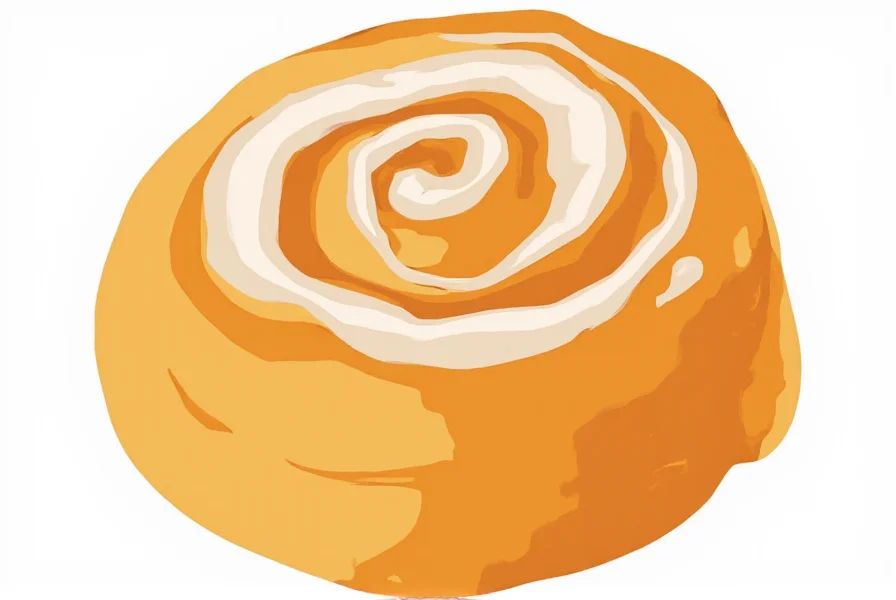Whether you're designing bakery menus, creating educational materials about baking, or developing food-related marketing campaigns, finding the right cinnamon roll visual assets can significantly enhance your project's appeal. This comprehensive guide explores the different types of cinnamon roll clipart available, where to source them responsibly, and how to implement them effectively in various creative contexts.
Understanding Cinnamon Roll Clipart Formats and Styles
Cinnamon roll graphics come in multiple formats, each serving different purposes. Vector files (SVG, EPS, AI) maintain quality at any size, making them ideal for logos and large-format printing. Raster images (PNG, JPEG) work best for web use, with PNG being preferred for its transparent background capabilities. The visual style significantly impacts usability—realistic photography-style illustrations work well for professional food blogs, while cartoon or minimalist designs suit children's educational materials and casual branding.
Top Sources for Quality Cinnamon Roll Visual Assets
When searching for free cinnamon roll vector graphics, reputable platforms like OpenClipart and Wikimedia Commons offer public domain options with clear usage rights. For commercial projects requiring higher quality, premium marketplaces such as Shutterstock, Adobe Stock, and Vecteezy provide extensive collections of professionally designed cinnamon roll illustrations. Designers seeking commercial use cinnamon roll illustrations should carefully review licensing terms, as some free resources restrict business applications.
| Source Type | Best For | Format Options | Licensing Considerations |
|---|---|---|---|
| Free repositories | Personal projects, education | PNG, basic SVG | Check CC0 or attribution requirements |
| Premium marketplaces | Commercial branding, professional work | High-res PNG, vector formats | Extended licenses needed for merchandise |
| Custom illustration | Unique branding needs | Any format | Full rights with proper contract |
Proper Licensing and Usage Guidelines
Understanding copyright and licensing is crucial when using high-resolution cinnamon roll PNG files. Public domain clipart requires no attribution, while Creative Commons licenses typically require credit to the creator. Commercial stock services operate on royalty-free models where you pay once for specified usage rights. For bakery businesses creating packaging or merchandise, ensure your cinnamon roll food illustration license covers product design applications, as standard web licenses often exclude physical product usage.
Implementation Tips for Maximum Impact
When incorporating cinnamon roll graphics into your projects, consider color harmony with your existing palette. For digital menus, animated GIF versions of steaming cinnamon rolls can increase engagement. In educational materials, labeled illustrations showing cross-sections help demonstrate baking techniques. Always maintain consistent style throughout your project—mixing realistic and cartoonish elements creates visual confusion. For social media content, cute cinnamon roll clipart for Instagram posts performs best when sized appropriately for mobile viewing with adequate negative space.
Avoiding Common Clipart Mistakes
Many designers unknowingly diminish their project's professionalism through improper clipart usage. Low-resolution images appearing pixelated on high-definition displays immediately reduce credibility. Overusing decorative elements distracts from your core message. Ignoring cultural considerations—such as depicting cinnamon rolls in contexts inappropriate for certain audiences—can create unintended messaging issues. Always verify that your food-themed vector graphics accurately represent the subject; stylized illustrations that misrepresent food items can confuse viewers or damage brand authenticity.
Creating Custom Cinnamon Roll Illustrations
When existing resources don't meet your specific needs, consider commissioning custom illustrations. Professional illustrators on platforms like Behance or Dribbble can create unique cinnamon roll graphics matching your exact branding requirements. Provide clear references including desired style, color scheme, and intended usage context. For DIY approaches, vector software like Adobe Illustrator or free alternatives such as Inkscape allow creation of scalable custom cinnamon roll vector art with proper layering for icing details and texture elements.
Practical Applications Across Industries
Beyond obvious food industry uses, cinnamon roll clipart serves diverse purposes. Educational institutions incorporate these visuals into nutrition curriculum materials. Wedding planners use them in brunch menu designs. Game developers include them as collectible items in cooking simulation games. The versatility of well-designed cute food clipart for digital projects makes it valuable across multiple creative fields when implemented thoughtfully and appropriately for the target audience.











 浙公网安备
33010002000092号
浙公网安备
33010002000092号 浙B2-20120091-4
浙B2-20120091-4